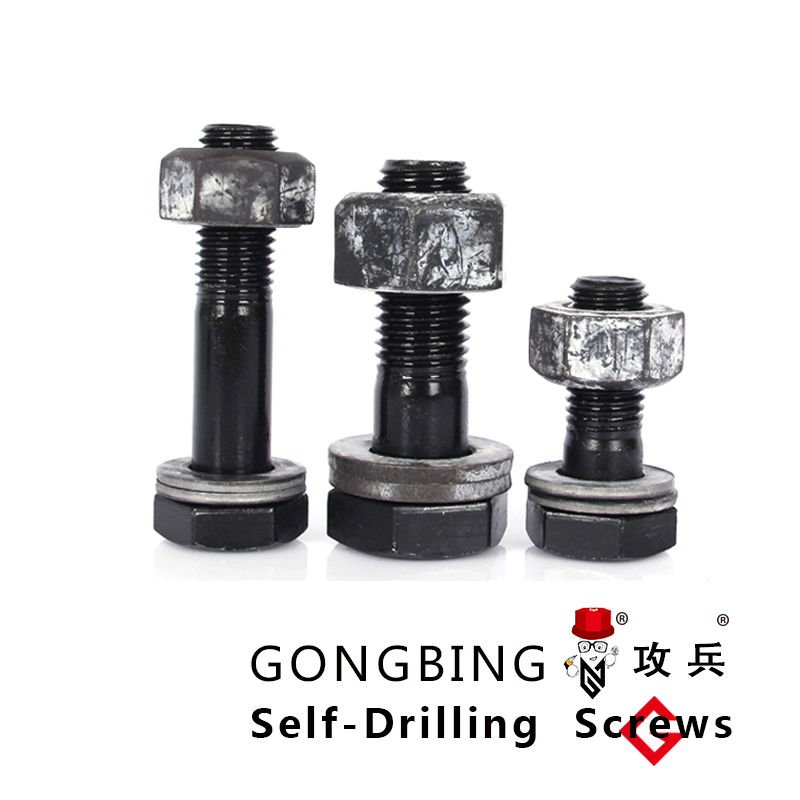Considerations for Designing Foundation Bolts in Structural Applications
Design of Foundation Bolts An Essential Component for Structural Integrity
Foundation bolts are critical elements in the construction and engineering fields, serving as anchors that secure structures to their foundation. Particularly in heavy construction projects, such as bridges, high-rise buildings, and industrial facilities, the design of foundation bolts is crucial for ensuring the longevity and stability of the structure. This article explores the significance, design principles, materials, and considerations involved in the effective use of foundation bolts.
Importance of Foundation Bolts
Foundation bolts provide stability to structures by anchoring them to their bases, thereby preventing displacement caused by loads, wind, or seismic activity. They can withstand tensile and shear loads, making them integral to the overall performance of the building. As the structural loads increase, so does the importance of properly designed and installed foundation bolts. Their failure can lead to catastrophic structural failures, resulting in loss of life and property, making their role paramount in architectural and engineering design.
Design Principles
When designing foundation bolts, several principles should be considered
1. Load Requirements The first step in the design process is to determine the loads that the bolts will need to support. This includes dead loads (permanent static forces) and live loads (temporary dynamic forces). Additionally, environmental factors such as wind or seismic loads must be evaluated.
2. Bolt Diameter and Length The diameter and length of the bolts are primarily dictated by the load requirements and the thickness of the foundation or base material. Larger diameters can accommodate greater loads; however, they also increase material costs and require more extensive anchoring techniques.
3. Embedment Depth The depth to which the bolts are embedded in the concrete or foundation material significantly affects their holding power. A deeper embedment can enhance stiffness and resistance to pull-out forces.
4. Type of Loading It’s essential to understand whether the bolts will be subjected to axial tension, shear, or a combination of both. The design must ensure that the bolts can manage these forces without failing.
5. Connection Details The design should also communicate how the foundation bolts connect to the structural elements, such as columns, beams, or equipment bases. The connection must be robust enough to distribute stresses effectively without compromising the integrity of the bolt or structure.
Materials Selection
design of foundation bolt

The selection of materials for foundation bolts impacts their performance and durability. Common materials include
- Carbon Steel Frequently used due to its high strength and cost-effectiveness. Carbon steel foundation bolts are often coated to resist corrosion.
- Stainless Steel Optimal for applications where environmental degradation is a concern, stainless steel offers excellent resistance to corrosion and is suitable for marine or chemical environments, albeit at a higher cost.
- Alloy Steels These are used for high-strength applications due to their enhanced mechanical properties. Alloy steels can be heat-treated to achieve specified strength levels.
Considerations in Design
In designing foundation bolts, several additional factors should be taken into account
- Corrosion Protection Given that foundation bolts are often exposed to adverse weather conditions or corrosive environments, implementing protective measures, such as galvanizing or using corrosion-resistant alloys, is crucial.
- Code Compliance Adhering to local building codes and standards is essential in the design and installation of foundation bolts. Codes often define the allowable tolerances, loading requirements, and testing protocols.
- Quality Control Regular inspection and quality assurance are vital during the manufacturing and installation processes. Any manufacturing defects or installation errors can compromise the effectiveness of foundation bolts.
- Cost Efficiency While robust design and quality materials are essential, it is equally important to balance performance with budget constraints. Conducting a cost-benefit analysis can help determine the most effective approach to design and material selection.
Conclusion
The design of foundation bolts is a multifaceted endeavor that requires a thorough understanding of structural engineering principles, material science, and environmental considerations. Properly designed and installed foundation bolts play a vital role in the safety and longevity of structures. Hence, engineers must prioritize meticulous design processes and rigorous inspections to ensure the structural integrity of their projects. As construction demands continue to evolve, so too will the innovation and practices surrounding the design of foundation bolts, underscoring their enduring importance in engineering.
-
Weatherproof Plastic Expansion Anchors for OutdoorNewsJun.06,2025
-
Sustainability in the Supply Chain: Eco-Friendly TEK Screws ProductionNewsJun.06,2025
-
Load-Bearing Capacity of External Insulation FixingsNewsJun.06,2025
-
Double Head Bolts: Enhancing Efficiency in Industrial MachineryNewsJun.06,2025
-
Corrosion Resistance in Chipboard Screws: Coatings for Wholesale DurabilityNewsJun.06,2025
-
Butterfly Toggle Bolts : Enhancing Structural ResilienceNewsJun.06,2025
